11 Seafood Restaurant Menu Red Flags, According to Chefs
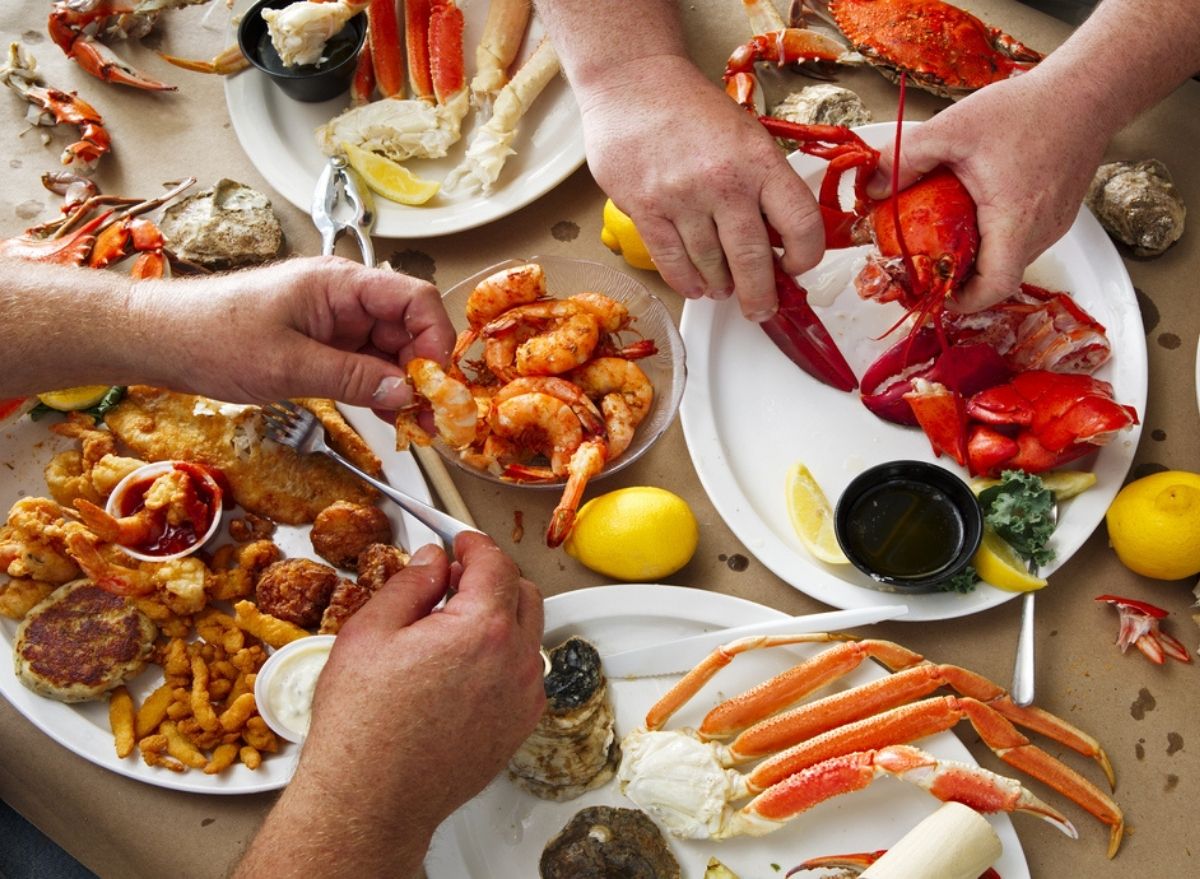
Every year, more and more Americans are eating seafood, in no small part due to the excellent restaurants around the country serving fresh fish dishes that have opened many eyes to the delicacies of the sea. Seafood lovers can choose from fresh Maine lobsters to the beautiful pink salmon of the Pacific Northwest, to juicy Gulf Coast shrimp—there's a seafood dish almost everyone enjoys. But, not all seafood restaurants are created equal.
While most offer the freshest picks from the sea, others may cut corners that could lead to a less-than-stellar dining experience. We spoke to some top chefs and pros around the U.S. for seafood restaurant menu red flags to keep on your radar.
Always look for local
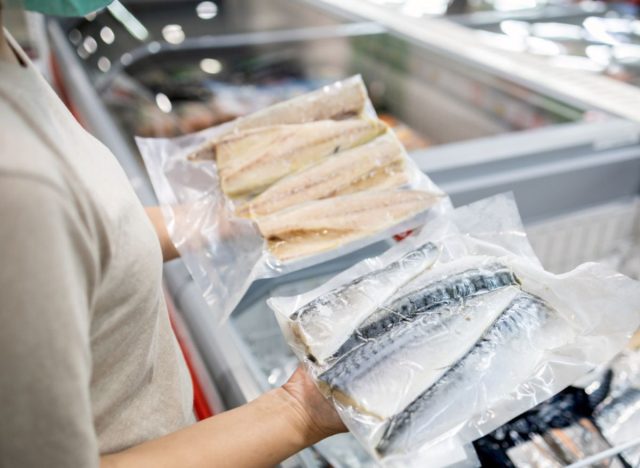
The less your seafood has to travel, the better, says Dell Leandro, culinary director of New England-based seafood restaurant Summer Shack. "Look for words like native, local, dayboat, seasonal and daily specials, these descriptions are very common on menus of restaurants that shop from the local fisherman," says Leandro. "Harvesting fresh seafood has many challenges and the same fish isn't always there to be caught, therefore a menu of a fresh seafood place will vary with the seasons. Don't be afraid of asking questions about what is being offered, especially where it's from."
Ask: Where is the fish from?
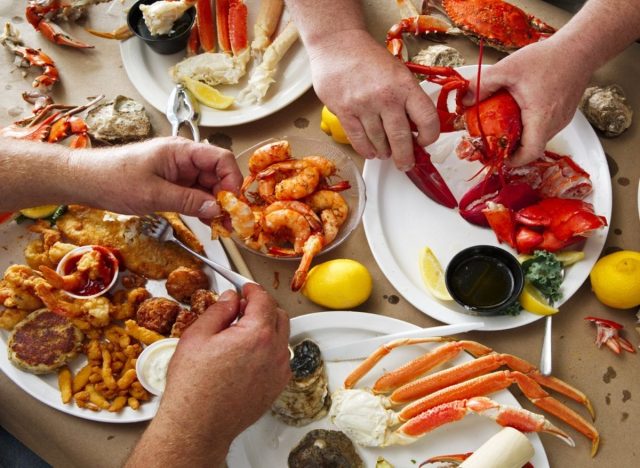
Alaskan-based chef Erik Slater of Seward Brewery knows a few things about fresh fish, and he says knowing where your dinner came from is key. "You should look for the origin of the fish. For example, seafood from Alaska is guaranteed to be wild and sustainable, and its cold, glacier-fed waters produce some of the purest, high-quality seafood in the world; expertly handled for superior taste and quality," Slater explains. "Plus, Alaska fishermen harvest wild seafood at the peak of freshness and freeze it within hours, oftentimes right on the boat. This process locks in the just-caught flavor and can be fresher than 'fresh'."
Look for simple preparations
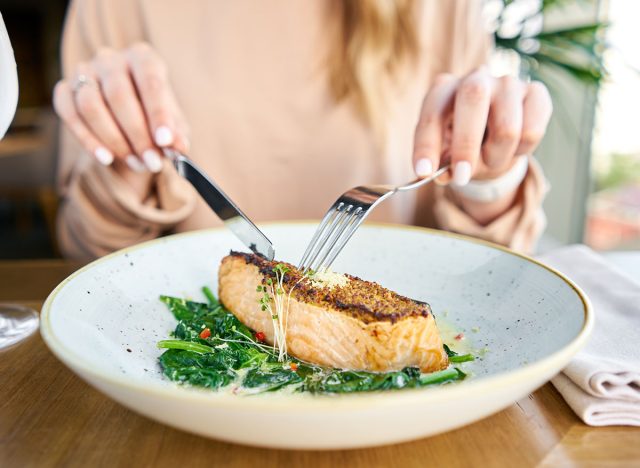
We love a good lobster ravioli, but when looking for a spot serving fresh seafood, make sure there are a few simple dishes on the menu, says Leandro. "Remember that simple is good. If the seafood is fresh, it would be good on its own, it doesn't need heavy flavors and it should be the star of the plate."
Chef and author Allen Bixby explains further, telling us, "Salmon, and meaty fish will benefit from a light hand applying heat, so ask that it be cooked medium rare/medium. If they balk at that, order something else. In general, only order seafood from a house that is known for it, because they will be more likely to prepare it properly for you."
Use your sense of smell
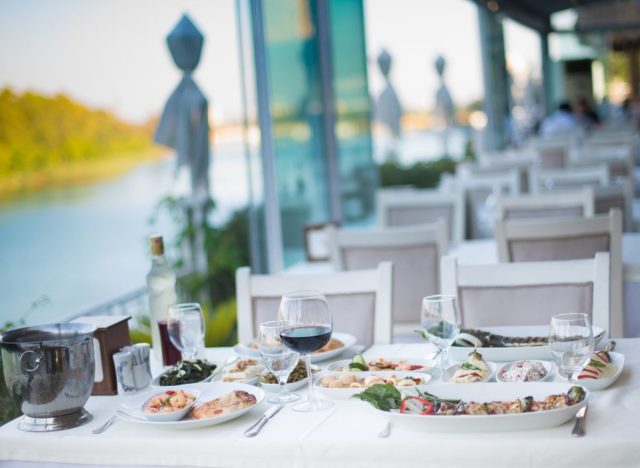
Chef Max Hardy, owner and head chef of Coop Detroit, says you can see and smell if fish is fresh. "You should be able to tell if your food is fresh from the smell; when your seafood/fish is fresh, it has an ocean saltwater smell," Hardy explains. "Also, fresh fish and other seafood should be bright in color; once it's been frozen and unthawed multiple times, it can lose its vibrant color."
Chef Marissa Williams at Herb & Sea in San Diego agrees, telling us, "Fish isn't supposed to smell like fish, it has a neutral scent with a salty essence from the ocean. If you walk into a seafood restaurant and there's an unpleasant fishy odor, then turn back around!"
Pay attention to texture

Williams also says fish that's not great will have a loose texture, explaining, "Pay attention to texture when you're eating fish, it should be easy to tear apart and not have a watery taste. When fish is waterlogged or temperature abused, the flesh isn't firm so you can leave an indentation."
Avoid seafood buffets
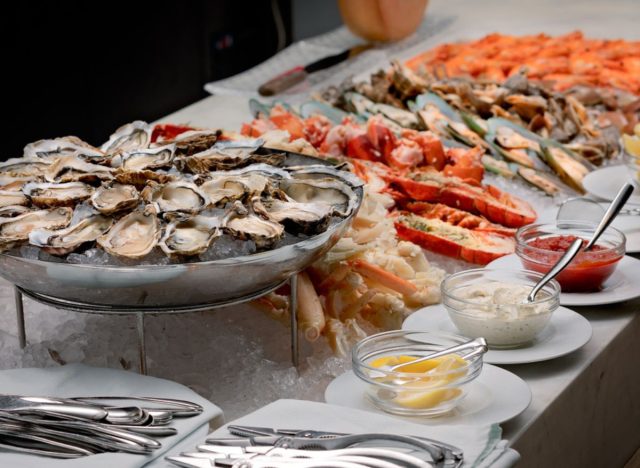
While all you can eat is tempting, you're tempting fate if you indulge, says trained chef and journalist Patrick Evans-Hylton. "Seafood is delicate, and doesn't hold well on buffets. It's easy for the fish to become dried out under heat lamps, or sit too long in the temperature danger zone. Not to mention all the handling by other diners."
Massive menus

A huge menu at a seafood restaurant (or any restaurant really) usually means not a lot on it is fresh, says Evans-Hylton. "Under most circumstances, it would be impossible for a kitchen to keep up with prepping and preparing such a huge menu, especially seafood, throwing up a red flag here," he says.
Jay Silva, the Culinary Director for Prezza, The Blue Ox, Tonno Wakefield and Tonno Gloucester, agrees, saying, "Restaurants with a lot going on may have an issue keeping fish fresh. Instead, try restaurants with a smaller menu and a scratch kitchen."
Fried might not be fresh
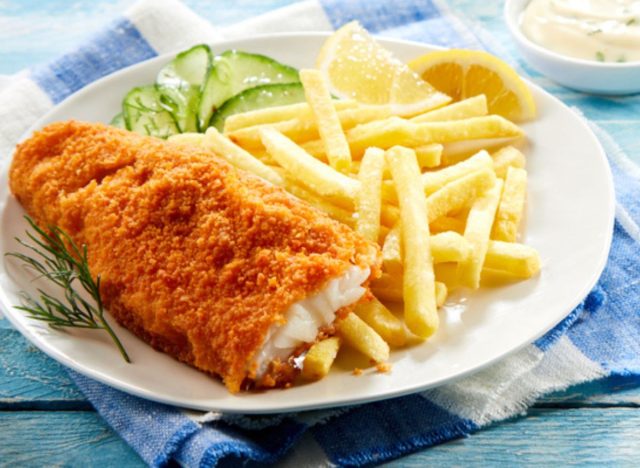
While a fried seafood platter can be an amazing summer treat, that breading can be hiding fish that isn't that fresh, says Michael Schwartz, James Beard Award-winning chef ofMichael's Genuine Food & Drink. "If a restaurant has a lot of fried options on the menu it normally means the seafood you're ordering is either frozen or not the freshest in quality," he explains.
Don't look for deals

Silva advises that good seafood isn't going to be low priced, unfortunately, saying, "Seafood that has been previously frozen or is nearing the end of its freshness tend to be cheaper. If you see a lobster dish priced at $9.99, beware."
Frozen isn't always bad
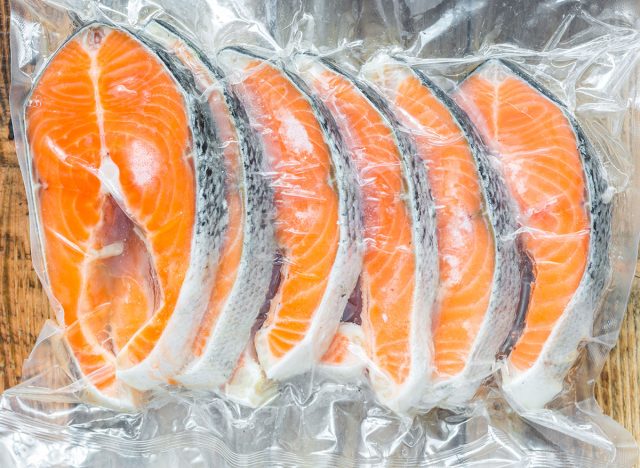
With flash freezing and overnight flights, people in landlocked states have access to great options for fish. "With today's technology, frozen seafood has become the norm and restaurants that would typically not serve seafood will include it on their menu," says Chef Dennis Littley. "Frozen seafood is very good, but fresh seafood is always the best choice."
No skin in sight

Even if you don't like eating the skin, seeing it served with the skin on is a good sign, says Chef and writer William Mack.
"Any seared or pan-roasted filets of sea bass, barramundi, or snapper should almost always have the skin intact," he explains. "Not only is crispy fish skin delicious, but it also shows the diner some cooking skill and says that the fish likely came in whole or at least in full sides."
And why? It means they aren't handling the fish in house, says Mack, "If those same filets were seared without the skin, you can bet that they were delivered pre-portioned. And that means the fish is probably older and of lower quality."









